FDA Head Announces Intent to Regulate Dairy Terms; Senate Rejects Measure to Impede FDA Action
August 07, 2018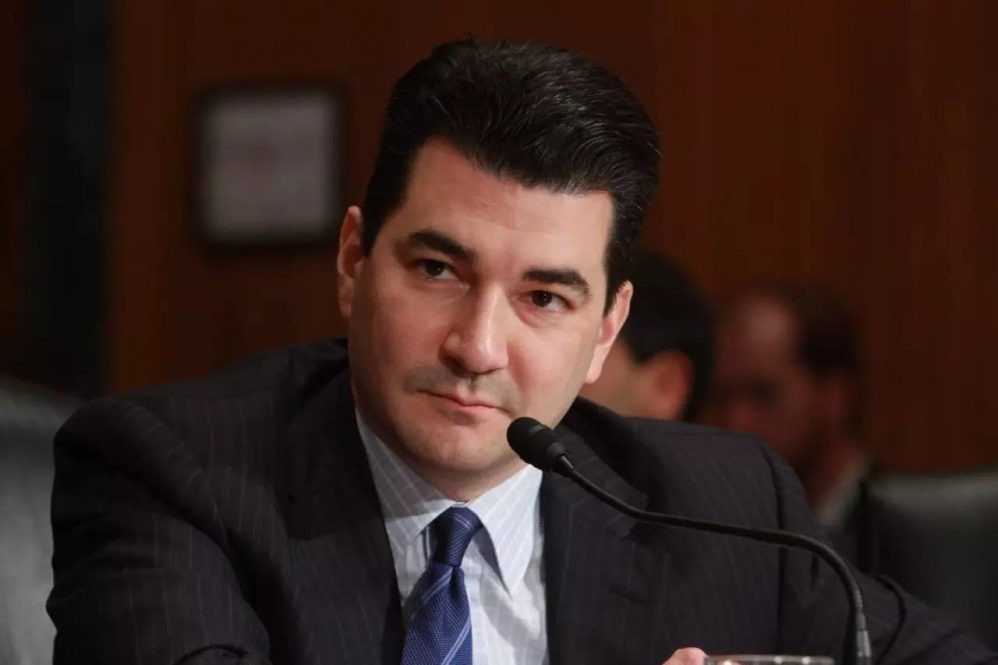 After a years-long effort by NMPF to halt the misleading labeling practices of imitation dairy foods, the commissioner of the U.S. Food and Drug Administration (FDA) last month acknowledged that “almonds don’t lactate” and said his agency intends to enforce dairy standards following a period of public comment.
After a years-long effort by NMPF to halt the misleading labeling practices of imitation dairy foods, the commissioner of the U.S. Food and Drug Administration (FDA) last month acknowledged that “almonds don’t lactate” and said his agency intends to enforce dairy standards following a period of public comment.
Prior to the start of a July 26 FDA hearing on government nutrition and labeling standards, Commissioner Scott Gottlieb released a lengthy statement explaining that the agency plans to address the deceptive marketing tactics utilized by makers of plant- and seed-based imitation products. Gottlieb recognized that the issue needs greater clarity, acknowledging that plant-based copycats are not the foods that have been standardized under the name “milk” and often vary widely in their nutrition.
“Because these dairy alternative products are often popularly referred to as ‘milk,’ we intend to look at whether parents may erroneously assume that plant-based beverages’ nutritional contents are similar to those of cow’s milk, despite the fact that some of these products contain only a fraction of the protein or other nutrients found in cow’s milk,” Gottlieb said.
“Dr. Gottlieb’s announcement that the agency is intending to act on this issue is very encouraging,” said Jim Mulhern, president and CEO of NMPF. “This issue is not just an arcane dispute but has significant public health implications because dairy imitators lack any consistent nutritional profile.”
During the FDA’s hearing last month, NMPF reiterated its insistence that any modernization of food standards should start with enforcing ones that already exist for products like milk, cheese and yogurt. Consumers use these standards to make informed purchasing decisions and “expect a certain level of product performance in return,” said Tom Balmer, NMPF’s executive vice president.
“[Alternative] products not only lack ingredients specified by the standards, they frequently fall short in expected characteristics like mouthfeel, taste and texture, and are nearly always less nutritious,” he testified.
NMPF also worked last week with a bipartisan coalition of senators to fend off an amendment that would have impeded the ability of FDA to enforce standards of identity. Sens. Tammy Baldwin (D-WI) and Jim Risch (R-ID) garnered an overwhelming amount of support to defeat, by a vote of 14-84, a proposed amendment to the fiscal year 2019 FDA appropriations bill that would have instructed the agency to severely limit any action against misleading dairy labeling practices.
“We fought this amendment because it would have undermined the decades-long policy, established by Congress, that FDA should regulate food names to promote honesty and fair dealing in the interest of consumers,” said Mulhern. “This vote should send a very strong message to food marketers who have long been ignoring FDA’s food labeling standards that those days are numbered. FDA now knows it has strong, bipartisan support in Congress in its efforts to assure a fair marketplace.”
NMPF Supports Passage of Amendment to Expand H-2A Program to Dairy Workers
August 07, 2018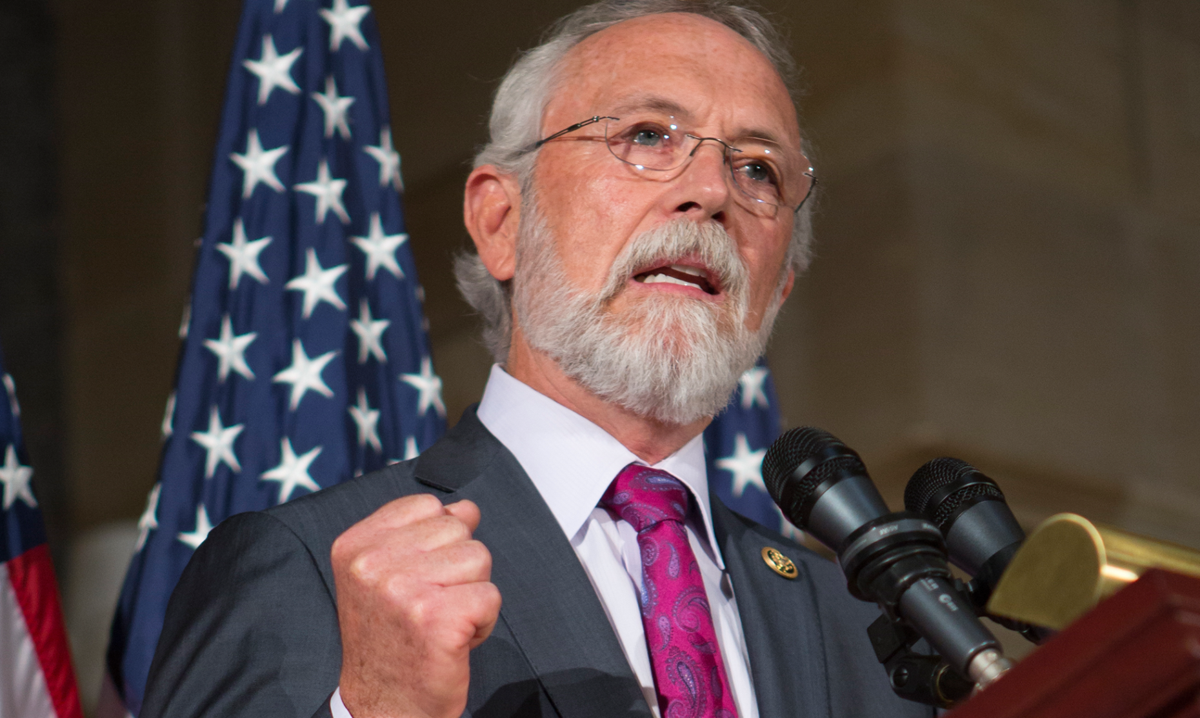 With support from NMPF, Rep. Dan Newhouse (R-WA) led an effort last month in the House of Representatives to use the annual federal appropriations process to create more options for dairy farmers to obtain year-round labor.
With support from NMPF, Rep. Dan Newhouse (R-WA) led an effort last month in the House of Representatives to use the annual federal appropriations process to create more options for dairy farmers to obtain year-round labor.
Newhouse’s amendment, approved as part of the Fiscal Year 2019 Homeland Security Appropriations bill, would allow farm employers to use the H-2A visa program to hire foreign workers, regardless of whether those employees are engaged in temporary or seasonal work. NMPF and members of its Immigration Task Force worked with Rep. Newhouse (picutred right) and other congressional leaders, including Reps. David Valadao (R-CA) and Henry Cuellar (D-TX), to advance the proposal so that dairy farmers can more readily use the H-2A visa program, even while NMPF continues to work in Congress on a long-term, more comprehensive solution to the immigration challenges facing agriculture.
“On behalf of America’s dairy producers, we greatly appreciate Rep. Newhouse’s work to expand the H-2A farm worker visa program to include year-round employees on farms,” said NMPF President and CEO Jim Mulhern. “We believe that creating an additional legal pathway for workers to connect with farm employers deserves bipartisan support.”
The full Homeland Security Appropriations bill will likely be considered later this year as Congress works to fund the government for the 2019 fiscal year, and NMPF will be encouraging the adoption of the H-2A provision in the final, overall funding measure.
At the same time, NMPF continues to seek enactment of broader legislation that would create an agricultural guest worker program and provide permanent legal status for current workers. House Judiciary Committee Chairman Bob Goodlatte (R-VA) introduced the AG and Legal Workforce Act (H.R. 6417), cosponsored by House Agriculture Committee Chairman Mike Conaway (R-TX), Ranking Member Collin Peterson (D-MN), Rep. Newhouse, and other members. The bill would create a new H-2C guest worker program for agricultural workers – including dairy – and allows current workers to participate in the program as well. NMPF will work with members to pass this bill in the House as an initial step, with the goal of improving the measure further as it moves through Congress. The House may vote on this bill following the summer recess, but no plans have been finalized.
MPP Forecast: August 2018
August 07, 2018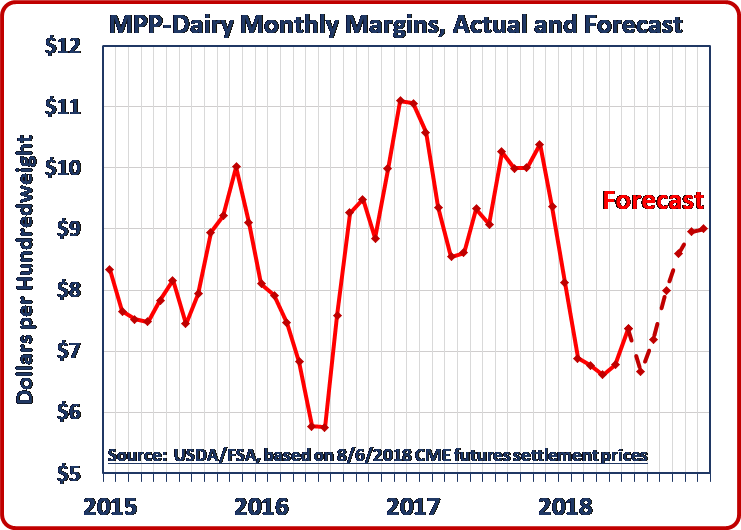 The monthly margin under the Margin Protection Program (MPP) for June 2018 was $7.37/cwt., $0.58/cwt. higher than the May margin. The June all-milk price was $16.30/cwt., $0.10 higher than a month before, and the June MPP feed cost formula was $0.48/cwt. lower than in May. More than half the drop in the monthly feed cost was due to lower soybean meal prices.
The monthly margin under the Margin Protection Program (MPP) for June 2018 was $7.37/cwt., $0.58/cwt. higher than the May margin. The June all-milk price was $16.30/cwt., $0.10 higher than a month before, and the June MPP feed cost formula was $0.48/cwt. lower than in May. More than half the drop in the monthly feed cost was due to lower soybean meal prices.
Dairy farmers who signed up for $8.00 margin coverage at the lower, Tier 1 premium cost would receive a net return of $0.46/cwt. – after payment of premiums and sequestration reduction of payments – on their covered milk production for all of 2018, based on USDA’s MPP Decision Tool forecast calculated using the August 6 CME dairy and grain futures settlement prices, shown in the graphic.
USDA’s MPP margin forecasts can be accessed online. NMPF’s Future for Dairy website offers a variety of educational resources to help farmers make better use of the program.
CWT-Assisted Contracts Sell 24 Million Pounds of Dairy Exports in July
August 07, 2018 Cooperatives Working Together last month helped member co-ops secure 43 contracts to sell 5.35 million pounds of American-type cheeses, 855,394 pounds of butter and 18.73 million pounds of whole milk powder to customers in Asia, the Middle East, North Africa and Oceania. The product will be shipped to customers in 12 countries in four regions of the world from July through December 2018.
Cooperatives Working Together last month helped member co-ops secure 43 contracts to sell 5.35 million pounds of American-type cheeses, 855,394 pounds of butter and 18.73 million pounds of whole milk powder to customers in Asia, the Middle East, North Africa and Oceania. The product will be shipped to customers in 12 countries in four regions of the world from July through December 2018.
These contracts bring the 2018 total of CWT-assisted product sales to 45.45 million pounds of cheese, 12.09 million pounds of butter and 27.11 million pounds of whole milk powder. These transactions will move overseas the equivalent of 889.25 million pounds of milk on a milkfat basis. The amounts of dairy products and related milk volumes reflect current contracts for delivery, not completed export volumes. CWT will pay export assistance to the bidders only when export and delivery of the product is verified by the submission of the required documentation.
Helping CWT member cooperatives gain and maintain world market share through the Export Assistance program in the long-term expands the demand for U.S. dairy products and the U.S. farm milk that produces them. This, in turn, positively impacts all U.S. dairy farmers by strengthening and maintaining the value of dairy products that directly impact their milk price.
All cooperatives and dairy farmers are encouraged to add their support to this important program. Membership forms are available on the CWT website.
NMPF Tells USDA to Follow Sound Science in Proposed Bioengineered Food Standard
August 07, 2018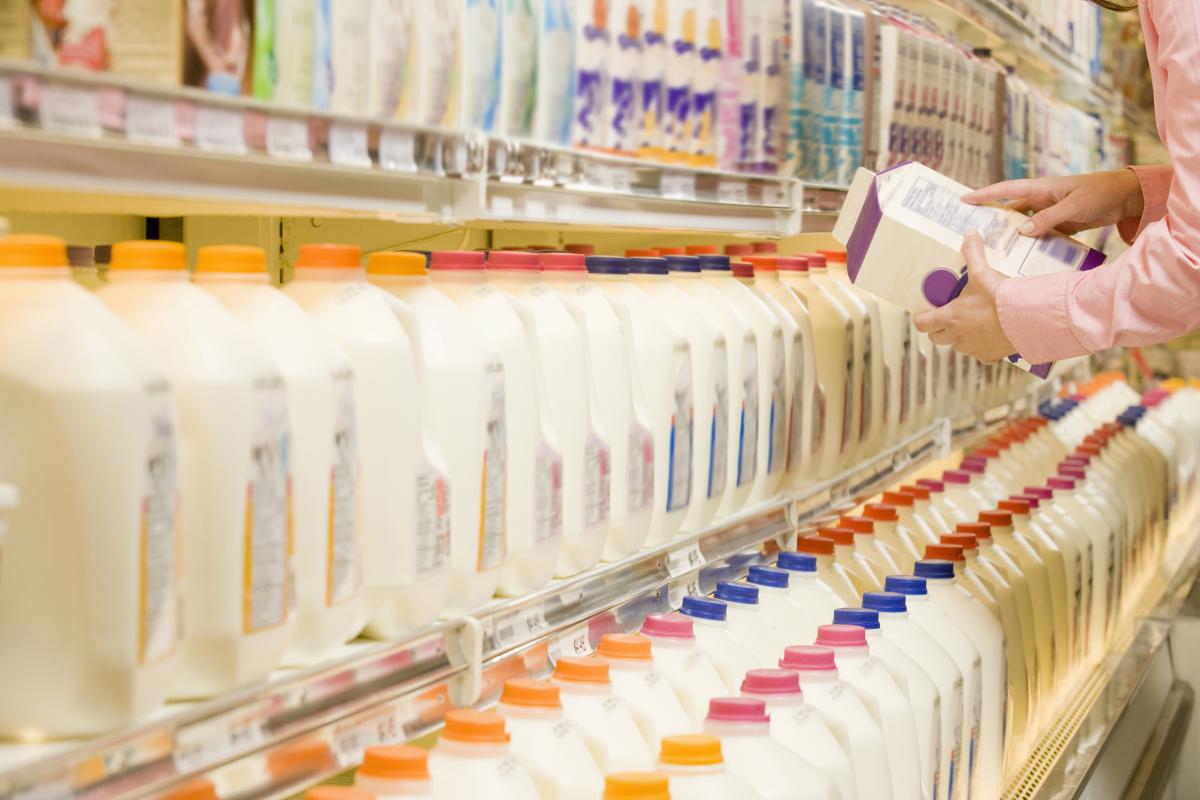 NMPF told the U.S. Department of Agriculture last month that the agency’s still-pending regulatory standard for the labeling of bioengineered food ingredients must ensure that consumers receive clear, accurate information about the foods they eat, and not stigmatize bioengineering when scientific evidence demonstrates the safety of the process.
NMPF told the U.S. Department of Agriculture last month that the agency’s still-pending regulatory standard for the labeling of bioengineered food ingredients must ensure that consumers receive clear, accurate information about the foods they eat, and not stigmatize bioengineering when scientific evidence demonstrates the safety of the process.
As a member of the Coalition for Safe Affordable Food (CFSAF), NMPF joined comments the coalition submitted in early July providing detailed input on USDA’s proposed rule to implement the National Bioengineered Food Disclosure Standard. The coalition comprises a variety of farm and food organizations that worked together to help pass the labeling law.
NMPF said it supports a science-based approach in determining how foods made using bioengineering should be regulated. Bioengineered foods have repeatedly been found to be completely safe by numerous prestigious domestic and international science and research organizations. Because of their clear and unequivocal safety record, NMPF has said that a bioengineered labeling standard should focus on providing consumers accurate information while discouraging misleading marketing tactics or meaningless absence claims.
In addition to supporting the coalition’s comments, NMPF filed its own set of comments on July 3 to highlight several elements of the rule, including how it should address the labeling of milk and meat from animals that consume bioengineered feed. Congress recognized when it passed the underlying biotech food labeling law that feeding grains developed through biotechnology has no effect on the animals or products derived from them and the labeling standard must reflect this.
Also at issue is USDA’s oversight in failing to exempt bioengineered enzymes in the proposed rule, such as those used in cheesemaking, from triggering a disclosure requirement. More than 60 countries with a bioengineered food disclosure requirement exempt such enzymes. NMPF said USDA should ensure the United States is consistent with other countries.
The comments also touched on NMPF’s concerns with voluntary label disclosures and their potential to be false and misleading. A qualifying statement, NMPF said, would properly educate the consumer and thus alleviate this concern. Finally, National Milk stressed that the bioengineered food disclosure standard is really a measure to regulate food marketing, not food safety. Therefore, in determining the level of a bioengineered substance needed for a product to be considered a bioengineered food, NMPF endorsed the coalition’s suggestion that USDA use a 5 percent threshold for inadvertently bioengineered ingredients and 0.9 percent threshold for intentionally bioengineered ingredients.
EPA Administrator Codifies Animal Waste Reporting Exemptions Under CERCLA
August 07, 2018Late in July, U.S. Environmental Protection Agency (EPA) Acting Administrator Andrew Wheeler approved a final rule to ensure that the legislative clarifications made by Congress earlier this year in manure-related air emissions regulations exempt dairy farmers and other livestock producers.
EPA’s move codifies the Fair Agricultural Reporting Method (FARM) Act passed by Congress earlier this year, after NMPF and other farm groups asked lawmakers to specify that ammonia and hydrogen sulfide emissions from animal feeding operations should not be regulated under the CERCLA.
The rule corresponds with the CERCLA/EPCRA reporting exemption handed down by the U.S. Court of Appeals for the D.C. Circuit. On December 18, 2008, EPA published a final rule that had exempted many farms from reporting air releases of hazardous substances from animal waste. On April 11, 2017, the D.C. Circuit Court vacated this final rule – exposing farms to potential new data reporting obligations.
Farms, however, remained exempt because of NMPF-backed legislative changes featured in the Fair Agricultural Reporting Method (FARM) Act, which was passed into law by Congress last March. The final rule makes regulatory revisions to reflect changes to CERCLA enacted in the FARM Act. EPA also removed the 2008 definitions of “farm” and “animal waste” from its regulations and added revised definitions of these terms to CERCLA regulations that correspond with the FARM Act.
“EPA is taking action to reflect Congress’s direction in the FARM Act that removed an undue reporting burden on American agriculture,” said Wheeler. “EPA is committed to providing regulatory clarity and certainty to farmers and ranchers — hardworking Americans invested in conserving the land and environment.”
EPA Sets Two-Year Timeline for NAEMS Air Emission Estimating Methodologies
August 07, 2018NMPF staff recently met with scientists at the U.S. Environmental Protection Agency (EPA) to discuss the agency’s renewed effort to finish the farm-related air quality research that began more than a decade ago under the National Air Emissions Monitoring Study (NAEMS). The EPA said it will issue draft Emissions Estimating Methodologies (EEMs) for ammonia, hydrogen sulfide and particulate matter in July 2020, and an EEM for volatile organic compounds in November 2020.
The NAEMS study was launched in 2006 to obtain modern, accurate data about the volume of manure-related emissions coming from animal agriculture operations across the nation. NMPF was one of the livestock organizations that provided input to EPA on how to develop a scientific survey that would generate useful data both for the government and dairy industry. Dairy industry funding for the research was provided in part through Dairy Management Inc. and the national dairy checkoff program.
When the NAEMS study was initiated, dairy farms were facing potential reporting obligations under three separate federal statutes: the Clean Air Act (CAA), the Emergency Planning and Community Right to Know Act (EPCRA) and the Comprehensive Environmental Response and Liability Act (CERCLA). Despite an appellate court decision that eliminated a 2008 agriculture limitation on reporting, NMPF and several agriculture groups were successful in removing the reporting requirement under CERCLA and EPCRA, subject to additional legal challenges. The reporting obligations under the CAA are still unknown and won’t be understood until the NAEMS study is further along.
NMPF will monitor the progress and continue to share input with the EPA as it proceeds with the analysis of the data it has collected and the subsequent development of models for helping farmers assess their own air emissions.
FARM Program Hosts Third Evaluator Conference
August 07, 2018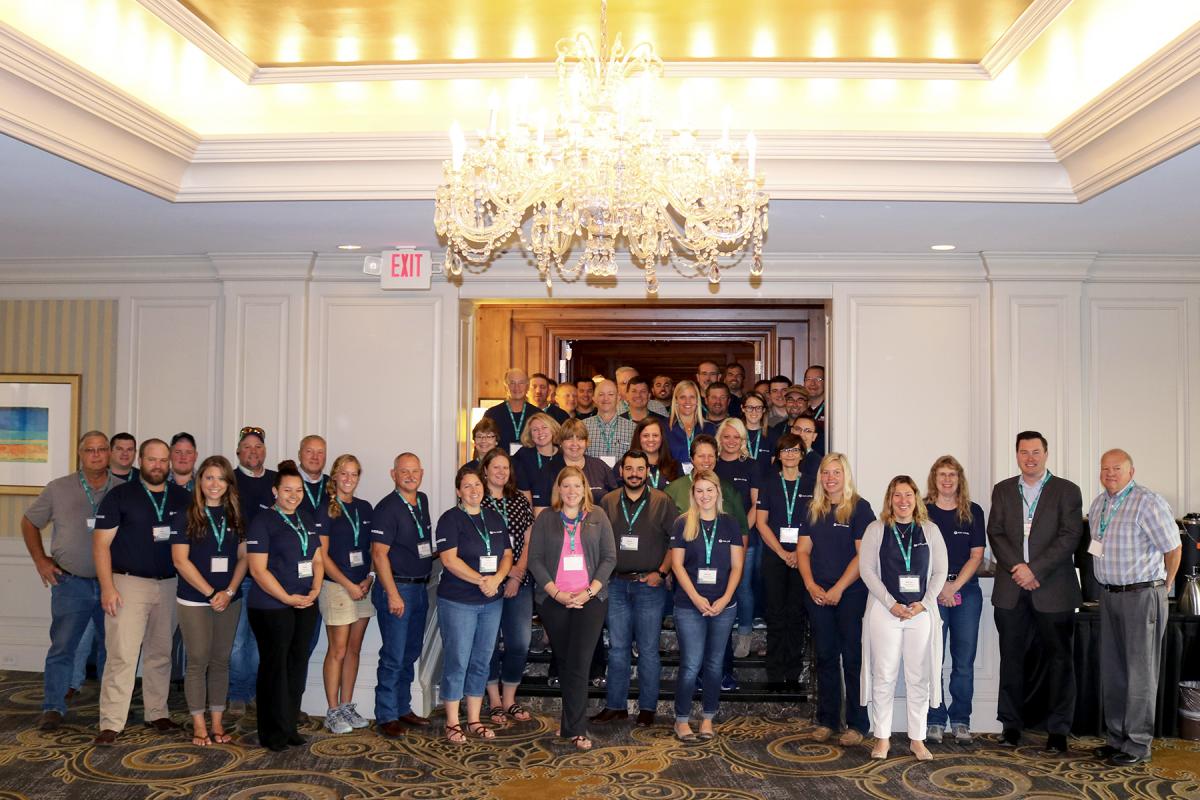 The National Dairy FARM Program hosted the third annual FARM Evaluator Conference in Kansas City, Missouri, last month, where more than 80 evaluators learned about the latest developments in the nation’s leading dairy animal care program. A total of 81 evaluators from 30 participating FARM Animal Care organizations, industry trade associations and private companies attended the conference.
The National Dairy FARM Program hosted the third annual FARM Evaluator Conference in Kansas City, Missouri, last month, where more than 80 evaluators learned about the latest developments in the nation’s leading dairy animal care program. A total of 81 evaluators from 30 participating FARM Animal Care organizations, industry trade associations and private companies attended the conference.
Session topics included an environmental stewardship and dairy customers panel with Brent Basel of Dean Foods and Joe McMahan with the Innovation Center for U.S. Dairy; a stockmanship and worker safety presentation by Dr. Robert Hagevoort of New Mexico State University; and “Handling an Animal Care Crisis,” presented by Jim Sleper with Southeast Milk, Inc. and Todd Davis with Weber Shandwick. In addition to program sessions, the conference hosted a brainstorming discussion for evaluators to provide input and programmatic feedback for FARM Animal Care Version 4.0, which is in the early stages of development.
A conference highlight was a behind-the-scenes tour of the Kansas City Zoo. Attendees discussed animal care protocols and employee training with zoo veterinarians and curators, and reviewed how zoo employees discuss sensitive animal care topics with the public.
USDA Announces Financial Assistance Package for Dairy Farmers as Tariff Conflicts Continue
August 08, 2018As the Trump Administration works to bring NAFTA 2.0 negotiations to a successful close, trading conditions with two of U.S. dairy’s top export markets – Mexico and China – remain tense as retaliatory tariffs continue to negatively affect American farmers and dairy manufacturers. To help mitigate the impact of those tariffs, the Trump Administration announced the outlines of a financial assistance program last month for dairy farmers and producers of other commodities that have lost export sales.
NMPF has been engaged in ongoing discussions with USDA about how to reduce the economic harm to farmers caused by trade disagreements between the United States and other nations. NMPF’s economic estimates indicate that these tariffs could cost U.S. dairy farmers $1.8 billion in reduced milk prices just through the remainder of this year, based on the decline in milk futures prices since the retaliatory tariffs were implemented.
On July 24, the U.S. Department of Agriculture (USDA) announced that it is preparing a $12 billion economic assistance program designed to help dairy farmers and other agricultural producers suffering from the effects of retaliatory tariffs imposed by Mexico, China and other key trading partners. The White House’s plan will use USDA’s authority to support farmers through a combination of direct payments, milk product purchases for distribution to feeding programs, and additional export development assistance. Further details about the exact nature of the relief measures will be unveiled by Labor Day, USDA officials said.
The plan includes several recommendations NMPF submitted to USDA in a letter sent earlier last month. “We thank the administration for incorporating our recommendations,” said NMPF President and CEO Jim Mulhern. “We will continue working with USDA on program details to achieve provisions that are efficient, cost-effective and equitable to farmers of all sizes in all regions.”
It is unclear the extent of the support that USDA will provide to farmers through direct payments. Anything short of the amounts determined by NMPF will likely not be enough to compensate producers for their losses, according to NMPF.
NMPF has also told the administration that the ultimate goal should be to restore full access to the Mexican and Chinese dairy markets and to pursue new trade treaties, all of which are important to the industry’s global competitiveness. Mulhern noted that “greater export opportunities are the long-term solution to the current situation. This assistance should help offset some of the short-term damage, but we also need access to key markets and new trade deals that allow our farmers to reach customers in other nations,” Mulhern said.
NMPF has continued to convey this message to policy makers, raising the dairy sector’s concerns with Congress and with a variety of administration officials. NMPF also submitted a statement to the House Ways and Means Committee in response to its Trade Subcommittee hearing on the Effects of Tariffs on U.S. Agriculture and Rural Communities.
As members of Congress return to their home states during August recess, NMPF is helping co-ops and dairy farmers deliver a united message to lawmakers: We welcome the short-term aid, but we need to fix our trade relationships.
Dairy Producers Hope to Gain Exports with Completion of NAFTA 2.0
August 08, 2018 Progress toward a successful renegotiation of the North American Free Trade Agreement (NAFTA) continues this summer, with NMPF reminding U.S. negotiators that Mexico – unlike Canada – has been a model for open dairy trade with the United States, and that no export market is more important to dairy farmers than that of our southern neighbor.
Progress toward a successful renegotiation of the North American Free Trade Agreement (NAFTA) continues this summer, with NMPF reminding U.S. negotiators that Mexico – unlike Canada – has been a model for open dairy trade with the United States, and that no export market is more important to dairy farmers than that of our southern neighbor.
NMPF has consistently urged the Trump Administration to prioritize three items during trade talks with Mexico: Preserving existing market access, rolling back retaliatory tariffs, and beating back trade barriers in the form of common food name restrictions that the European Union (EU) is using to give itself an unfair advantage in its new free trade agreement with Mexico.
As U.S. trade negotiators close in on a deal, U.S. dairy producers are hopeful that restoring duty-free and open trade with Mexico will propel the industry to achieve future growth in the Mexican market, which continues to expand year after year.
NMPF and the U.S. Dairy Export Council (USDEC) recently outlined these issues in a submission to the House Ways and Means Subcommittee on Trade, explaining:
In Mexico, we have worked collaboratively with our industry colleagues to grow dairy demand, build relationships between buyers and suppliers, and improve the infrastructure needed to efficiently move product to market. As a result, U.S. dairy sales there have grown from just $200 million in 2002 to more than $1.3 billion last year. As of last year, U.S. dairy sales accounted for more than three-quarters of Mexican imports.
We are deeply concerned, however about the impact that Mexico’s 20 to 25 percent retaliatory tariffs on U.S. cheeses is having. America, which sold more than $400 million worth of cheese to Mexico, now risks losing sales to it biggest competitors in Europe. Mexico finalized a trade agreement with the European Union in late April that will increase Europe’s market access to Mexico and impose new restrictions on certain common-name cheese products from the United States.
Europe seeks to grab more and more of the Mexican market every day, which is why more than 60 dairy businesses sent the White House a letter on June 26 requesting that the President, “suspend Section 232 steel and aluminum tariffs on Mexican products until the NAFTA renegotiation is completed, particularly in light of Mexico’s willingness to constructively engage with U.S. negotiators.”
In addition, NMPF continues to work with the Trump Administration on other important NAFTA-related topics, including opening the closed Canadian dairy market and addressing Canada’s Class 7 pricing program that puts U.S. producers at a disadvantage.
As summed up in a letter from the industry to the Agriculture Department and U.S. Trade Representative at the start of August, “The free flow of goods is at the heart of the NAFTA agreement, and we believe obtaining market access gains in Canada and preserving market share in Mexico will go a long way to furthering that goal. As you continue your important work, we stand ready to assist you in any way needed.”
NMPF Fights for Science-Based Global Nutrition Guidance for Young Children
August 08, 2018 To help maintain the important role that dairy foods play in the diets of young children, NMPF has been pushing back against misguided World Health Organization (WHO) policies that would discourage the consumption of dairy products by kids under age 3.
To help maintain the important role that dairy foods play in the diets of young children, NMPF has been pushing back against misguided World Health Organization (WHO) policies that would discourage the consumption of dairy products by kids under age 3.
The WHO creates standards, rules and guidelines that influence the policies and views of countries all over the world. The WHO standards are utilized by the governments of many of U.S. dairy companies’ export customers, and also shape the development of U.S. policies and guidance impacting food and agriculture. NMPF is working with the U.S. Dairy Export Council (USDEC) to engage more deeply in these arenas and set the record straight against misleading claims about the proper role of dairy foods.
Last month, NMPF and USDEC sent a representative to the annual Codex Alimentarius Commission (CAC) meeting to guard against efforts to codify WHO guidance restricting the sharing of marketing information about dairy foods. Another key priority at that Codex meeting was ensuring that Codex’s independent role as the global scientific standard-setting body was upheld in the face of efforts by some to redirect its focus and approach.
In May, the World Health Assembly (WHA) – part of the WHO – considered a resolution that would have effectively discouraged the consumption of dairy products by children younger than age three. The United States government supported most of the resolution, which was primarily focused on the benefits of breast-feeding by infants, while fighting against text in the resolution intended to discourage the consumption of milk and other dairy products by young children ages one and two.
Unfortunately, those facts were missing from a news article in The New York Times that erroneously alleged U.S. government representatives pushed for a policy that was anti-breastfeeding. NMPF responded with a news release offering the truth: that there have been consistent, bipartisan efforts dating back to 2016 to direct WHO policies impacting dairy consumption by young children back toward ones supported by science.
To help set the record straight, NMPF also reached out to congressional offices and media outlets to refute the misinformation and supply facts about the U.S. dairy industry’s support for the American Academy of Pediatrics’ recommendations on breastfeeding until age one and providing dairy products to young children to support their healthy development.
NMPF will continue to defend the important role of dairy nutrition and push back against efforts to impose restrictions on dairy products that are unsupported by sound science.





